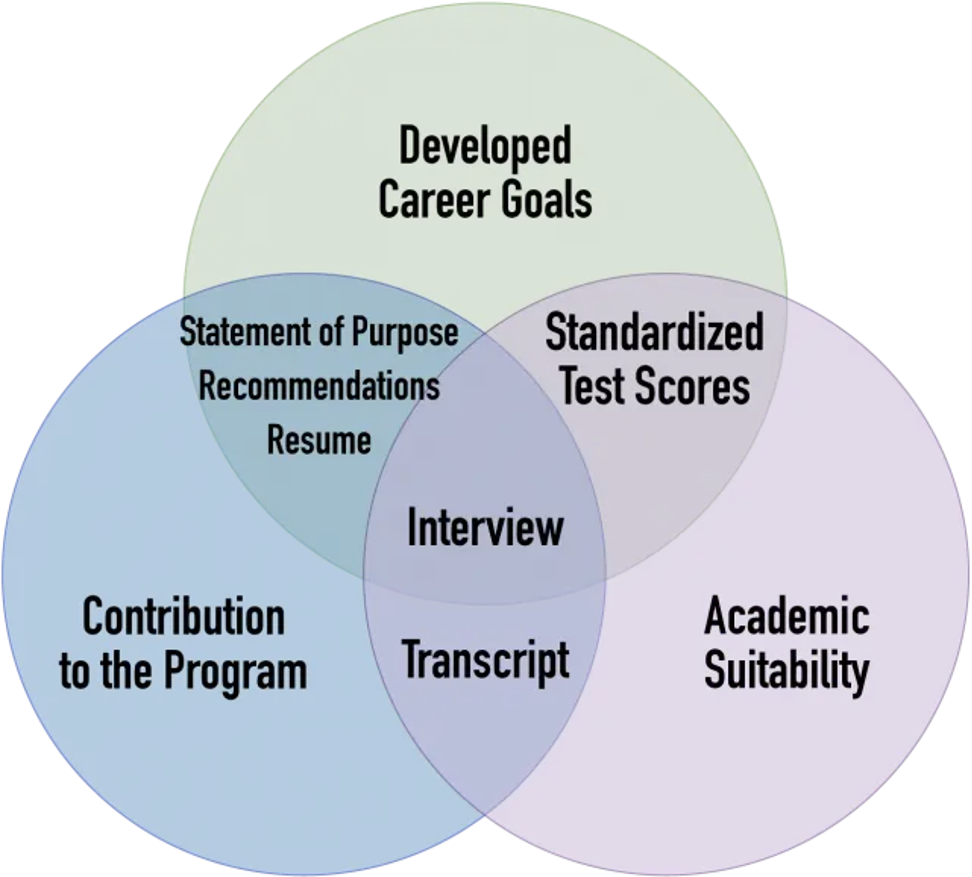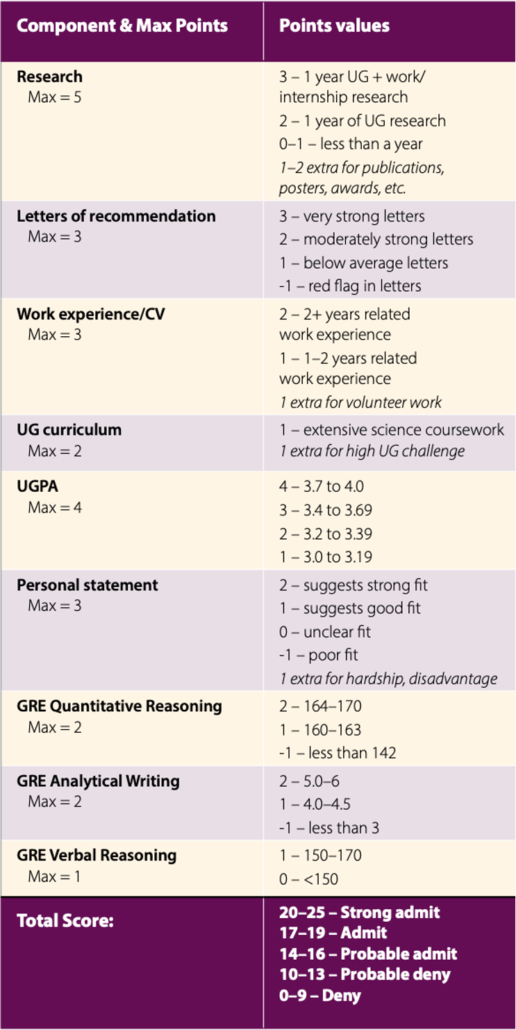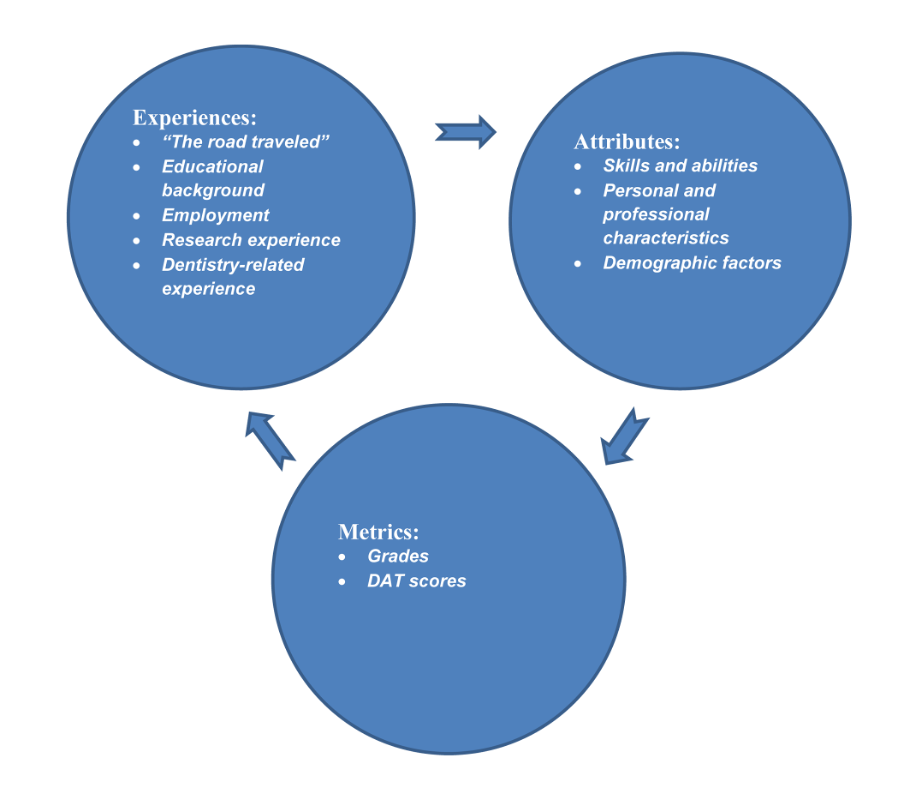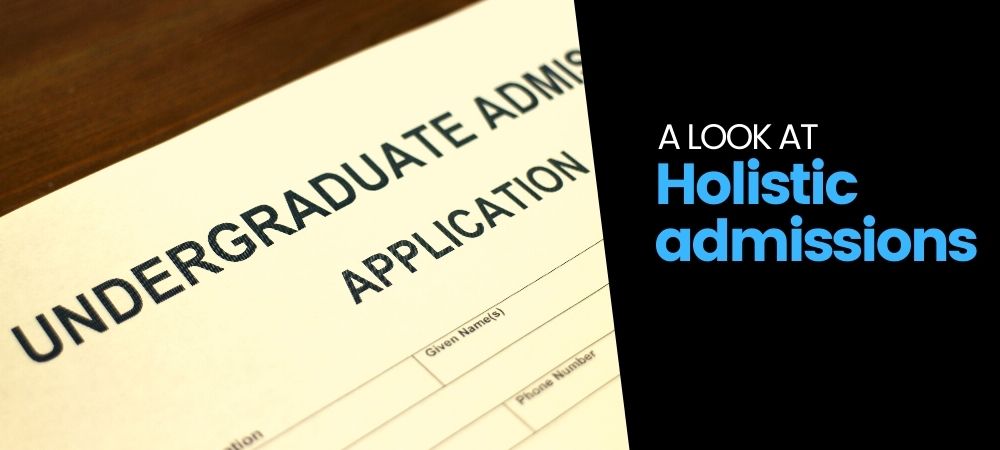Higher ed professionals have become familiar with the term “holistic admissions.” The concept has existed in one form or another for at least a century. What does it mean for today’s admissions teams?
Here’s a breakdown of modern holistic admissions in 2024, covering what it is, what it isn’t, and what criteria your institution should employ if you’re considering putting the idea ipractice.
Modern holistic admissions 101
What is it? The holistic admissions process is a big-picture look at each and every applicant for higher education. Practitioners aim for a zoomed-out, panoramic view of prospects, taking into account everything from test scores and GPAs to artistic endeavors, athletic pursuits, employment history, and leadership skills.
The University of Maine at Farmington defined its commitment to holistic admissions like so:
“We look at your high school achievements, your extracurricular activities, your work and life experiences, community service activities, artistic and creative talents, and more. All the unique, personal traits that make you… you.”
The overarching goal of holistic admissions is to consider applicants their totality: the “whole” person, as opposed to the numerical transcript.
In theory, this will help ensure the prospect is the best possible fit for the institution, endowed with both the personal qualities and the academic acumen necessary to succeed.

Holistic admissions considerations for applicants at the UF Warrington College of Business Master of Science in Finance
A recalibration of “success”
In the sphere of holistic admissions, excellence and success are multi-faceted concepts predicated more on personal development than on straight As.
As far back as 2009, Harvard’s then-Dean of Admissions, William R. Fitzsimmons, offered his overview of how holistic admissions helps reframe the notion of scholastic achievement:
SOURCE
“While we value objective criteria, we apply a more expansive view of excellence. Test scores and grades offer some indication of students’ academic promise and achievement. But we also scrutinize applications for extracurricular distinction and personal qualities.”
“Students’ intellectual imagination, strength of character, and their ability to exercise good judgment — these are critical factors in the admissions process, and they are revealed not by test scores but by students’ activities outside the classroom, the testimony of teachers and guidance counselors, and by alumni/ae and staff interview reports.”
A way to make good on core values
Through holistic admissions, schools have a chance to live up to their mission statements, putting their money where their mouth is regarding pledges to champion diversity and/or to enroll only those students who are genuinely ready to thrive in the real world.
This is because holistic admissions’ emphasis on unconventional, “noncognitive variables” (such as overall course load, after-school activity, job experience, etc.) empowers higher ed institutions to expand their reach to underserved populations––that is, those with limited resources for college or post-graduate prep.
In addition, the holistic process leaves room for admissions teams to incorporate certain demographic/cultural markers into each new class, with an eye toward diversifying their student body to better reflect our global multicultural landscape.
Career-focused institutions can also use holistic admissions to ensure student populations accurately represent the audience they hope to serve post-graduation. (When harnessed appropriately, this strategy helps avoid instances where specific industries are dominated by singular demographic profiles, leaving clientele exposed to potential prejudices, despite even the best of intentions.)
Holistic admissions is NOT:
A reason to disregard certain standards
Holistic admissions hasn’t sounded the death knell for standardized testing or academic transcripts… yet.
Until something better comes along, most institutions will rely on certain scholastic baselines when evaluating applicants, especially in cases where applicant pools far outweigh the number of spaces available.
An excuse to pick and choose
At first glance, holistic admissions can seem like an arbitrary practice in which applicants are at the mercy of admissions officers’ personal preferences. Obviously, you’ll want to avoid this trap. While some holistic decisions can appear worryingly subjective, there are checks and balances you can employ to help make sure your admissions strategy remains as unbiased and consistent as possible.
Examples include:
- a codified rubric detailing how to “score” each student attribute
- a diverse admissions panel representing a range of experience, as well as varying points of view (e.g., admissions teammates, faculty, and alumni)
- an automated communications system powered by a customer/student relationship management tool (CRM), to help guarantee all prospects receive the appropriate messaging and materials necessary to complete their applications

A sample attribute “scorecard” for graduate school admissions from ETS via Holisticadmissions.org.
A foolproof system
Holistic admissions is by no means bulletproof. Without due diligence and careful consideration, teams are at risk of being swayed by internalized biases, leaving institutions vulnerable to litigation and students vulnerable to unfair marginalization.
Complicating matters further is the fact that getting to know a person is extremely hard to do on paper. Still, the potential benefits of holistic admissions are too good to ignore. These include enriched learning environments and enhanced programmatic success, as well as time, money, and effort saved.
Holistic admissions criteria worth considering
When onboarding a holistic admissions strategy, higher ed teams—particularly those in the medical field—often find it helpful to leverage the “E-A-M” admissions model, which examines the “experiences, attributes, and metrics” of each applicant.

Using this model as our guide, let’s break down some of the chief components you should consider when applying a holistic approach.
E is for experiences
Demographics
Life experience is shaped by infinite factors: from location to socio-economic status, ethnicity, gender identity, and more. If your ultimate task is to help improve the “cultural competence” and social IQ of your students in order to prepare them for success in a wider global community, include prospect demographics as part of your admissions search.
Without resorting to demographic “quotas,” take the time to consider how each prospect can bring a fresh point of view to your campus and how their day-to-day experiences can complement or challenge their peers in a constructive way.
Extracurriculars
Extracurricular activities are a helpful means of measuring how an applicant can contribute to your student body. Remember, however: no two activities are alike, and each extracurricular speaks to a different set of implied skills.
Think about these examples:
- A student with a fabulous track record as a soccer forward probably has a knack for leadership and likely performs admirably under pressure.
- A cellist with a penchant for Shostakovich likely possesses a keen analytical mind and a talent for collaboration.
Both sound promising, but which would suit your institution best? And which would prove most effective in your institution’s specialized fields?
Personal statement/essay
One surefire way to learn about an applicant is to ask. A personal statement or essay is a straightforward tool for prospects to tell their stories and illuminate their most formative and impactful experiences, along with their core beliefs.
Still, this device can be limited in scope. Consider opening up this portion of your application by accepting a variety of formats, including non-written ones like short films or fine art pieces. If you opt for the traditional essay, try offering several different prompts so no applicant gets boxed into a single topic or a single source of inspiration.
A is for attributes
A
Coursework history
GPAs are a given for most admissions teams, but some higher ed experts are inclined to recommend reviewing student coursework as a whole, rather than reducing it to its end results—which helps give a sense of the student’s work ethic and levels of persistence.
To do this, it’s advisable to look at grades over time, as well as course load, the depth and breadth of the applicant’s coursework, and the rate of course withdrawal.
Compatibility and employability
As an admissions professional, you know your school better than anyone. You also know the personality traits most compatible with your campus lifestyle and the characteristics most attractive to your regular roster of job recruiters.
Compatibility and employability should therefore carry at least some significance within your admissions process.
Ask yourself probing questions about each prospect’s history and personality, such as:
- Does their course load indicate they’ll be able to balance a healthy schedule once they arrive at school?
- Does their personal statement suggest they have the appropriate temperament for the career path(s) your institution offers? (Think: A healthy combative attitude might be conducive to law school, while a naturally compassionate personality may be a better fit for a physical therapy program, etc.)
- Does their resume demonstrate they have enough drive and focus to hold down a real job after graduation?
Interview “performance”
Sometimes personal attributes are best evaluated in person. Hence why prospect interviews are still such an integral part of the admissions conversation.
A holistic admissions interview panel, as hinted above, should ideally include a broad spectrum of campus voices (from admissions teammates to alums) wherever possible. If one-on-one is your preferred medium, however, make sure interviews have a definitive structure with a consistent line of questioning.
Also, allow time for each applicant to express themselves on their own terms and to ask questions as needed. Afford them the opportunity to give you as much insight into their personality, comportment, and interactive style as possible.
Recommendations
Third-party testimony is always welcome when trying to assess new prospects. However, for a recommendation to be truly worthwhile, you should consider exactly where it comes from (a teacher? counselor? cleric? local politician?) and whether it speaks to student attributes that correspond directly to your institution.
In other words: All recommendations are positive by design; take the time to figure out the “why” and “what” beneath each one.
M is for metrics
As I’ve mentioned, scholastic achievement will always hold some sort of sway, even if it’s only used as a negotiable baseline.
Here are some less obvious numbers to submit for admissions review:
- Volunteer hours logged/volunteer impact measurement—Volunteering for one afternoon is different than having a record of continuous outreach)
- Ratio of courses enrolled to courses completed—Does the prospect see things through?
- Average year-over-year GPA (with rate of increase)—Is their scholastic achievement on the rise?
- Class rank—How do they stand among their peers?
Wondering how you can integrate the E-A-M template into your existing admissions procedure?
Uncertain how your team can avoid holistic pitfalls to reap the greatest benefits for both your applicants and your school? Our next article will feature strategies for holistic admissions implementation, so stay tuned.









![[Roundtable] Future of Online Certification and Distance Learning Programs 5 Future of Online Certification & DLP](https://www.leadsquared.com/wp-content/uploads/2022/05/education-rt-80x80.png)